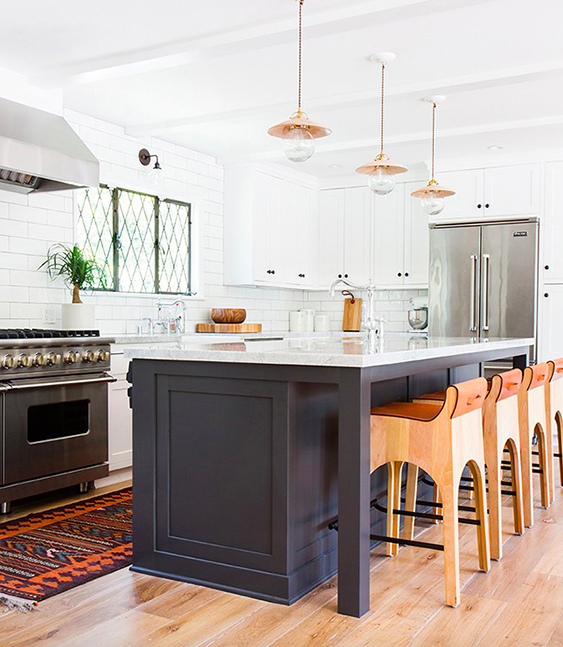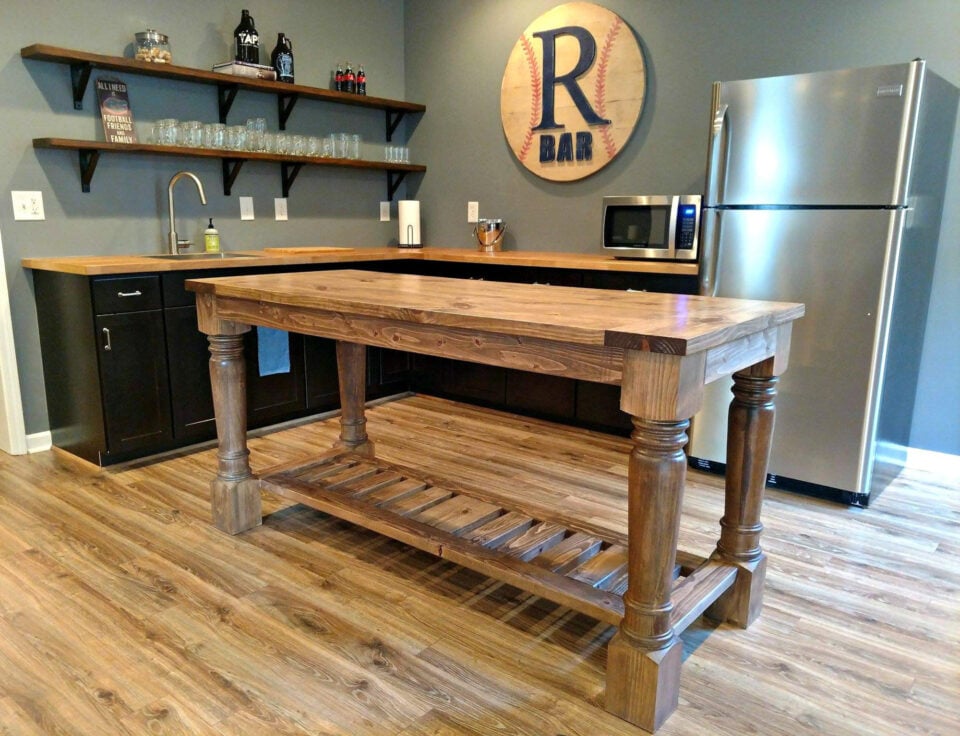How to Install a Kitchen Island Leg for Maximum Stability and Style
How to Install a Kitchen Island Leg for Maximum Stability and Style
Blog Article
The Relevance of a Sturdy Kitchen Island Leg in Creating a Useful Food Preparation Location
A strong kitchen area island leg works as an essential part in developing a practical cooking atmosphere, offering necessary assistance for both the counter top and numerous cooking area tasks. The stability it uses can considerably lower the threat of accidents in high-traffic areas, while also adding to the overall visual comprehensibility of the room. As kitchen areas progress right into multifunctional areas for cooking, dining, and mingling, the choice of products and layout considerations for island legs ends up being increasingly essential. Recognizing these aspects can change your kitchen area into a more secure and more effective area, prompting further expedition right into the best options offered.
Advantages of Sturdy Island Legs
Giving important support, strong kitchen area island legs play an essential function in improving the functionality and resilience of cooking area islands - kitchen island leg. These legs not just bear the weight of the kitchen counter and any added things put on the island, but likewise add to the total stability of the structure. A well-supported kitchen area island makes certain that it remains upright and useful, also under heavy use, which is specifically important in active cooking area settings
In addition, strong island legs can boost the aesthetic allure of the kitchen. They give a solid framework that can enhance numerous style styles, from modern to traditional. This flexibility enables property owners to personalize their kitchen area islands according to individual taste while ensuring that the structural integrity stays uncompromised.
Along with their supportive function, robust kitchen area island legs can also boost safety. A secure island decreases the risk of mishaps triggered by tipping or wobbling, which is specifically essential in households with youngsters or senior individuals. In addition, solid legs can promote a seamless flow of tasks, permitting reliable meal prep work and social communications within the kitchen area area. Eventually, spending in durable kitchen area island legs is necessary for a practical and aesthetically pleasing cooking area.
Products for Kitchen Island Legs
When selecting materials for cooking area island legs, longevity and visual charm are important variables to take into consideration,. One of the most common products consist of hardwood, metal, and engineered timber, each offering unique benefits.
Wood, such as oak, cherry, or maple, is a traditional selection as a result of its toughness and ageless beauty (kitchen island leg). It can hold up against significant weight and is immune to wear, making it suitable for high-use kitchen settings. Furthermore, hardwood can be tarnished or painted to complement various kitchen styles
Steel legs, usually crafted from stainless steel or functioned iron, supply a commercial and modern-day look. They are extremely solid and can support substantial loads while being resistant to moisture and warm, which is beneficial in a cooking area. Metal legs can also be easily cleaned up, improving their practicality.

Style Considerations for Stability
The choice of products for kitchen island legs straight affects the layout factors to consider for security. When developing a kitchen island, it is vital to examine the weight-bearing capacity of the chosen products. Larger products, such as strong wood or steel, typically give higher stability, especially under the stress of daily usage.
In addition, the leg design should include appropriate geometry to enhance security. A bigger base enhances the assistance area, minimizing the danger of tipping or wobbling. Factor to consider should likewise be provided to the height of the legs; disproportionate leg lengths can result in discrepancy, jeopardizing the overall security of the island.
In addition, the circulation of weight throughout the island is critical. Making sure here are the findings that the leg positioning straightens with the heaviest components, such as counter tops and devices, will certainly even more boost security.
Upkeep Tips for Longevity

Cleaning up is another crucial facet of upkeep. Depending upon the material of the legs-- whether timber, metal, or composite-- ideal cleaning approaches ought to be utilized. For wooden legs, a mild wipe with a damp towel and a suitable wood cleaner will certainly aid maintain their surface. Metal legs may call for a light polish to stop rust and preserve their radiance.
If the kitchen area island experiences heavy use, think about enhancing the legs with added braces or supports to boost resilience. By following these maintenance suggestions, house owners can ensure their cooking area island legs remain durable and useful for years to come.
Choosing the Right Leg Design
Normal maintenance makes sure that kitchen area island legs stay useful and sturdy, yet choosing the appropriate leg design is just as important for both appearances and support. The choice of leg design can significantly influence the general style and harmony of your cooking area.

Capability is another critical facet. For circumstances, thicker legs or those with a tough base can support larger counter tops and tools, enhancing the island's energy. Conversely, slim legs might develop an airy appearance, appropriate for lighter layouts yet potentially much less helpful.
Verdict
In recap, the relevance of strong kitchen area island legs can not be overstated in the creation of a practical cooking area. These legs give necessary support, improve stability, and contribute to the general aesthetic of the kitchen. By very carefully choosing proper materials and styles, along with implementing correct upkeep practices, the longevity and effectiveness of kitchen islands can be made sure. Ultimately, spending in robust island legs is fundamental to achieving a efficient and secure culinary atmosphere.
A sturdy kitchen island leg offers as a basic component in establishing see post a practical food preparation setting, giving needed assistance for both the counter top and numerous cooking area tasks.Supplying vital support, sturdy kitchen island legs play a critical function in boosting the capability and resilience of kitchen area islands. Ultimately, spending in durable kitchen area island legs is necessary for a useful and visually pleasing cooking location.
Consideration ought to also be provided to the elevation of the legs; out of proportion leg lengths can lead to inequality, compromising the general stability of the site web island.
Wooden legs offer heat and a traditional look, while steel legs use a contemporary and commercial feeling.
Report this page